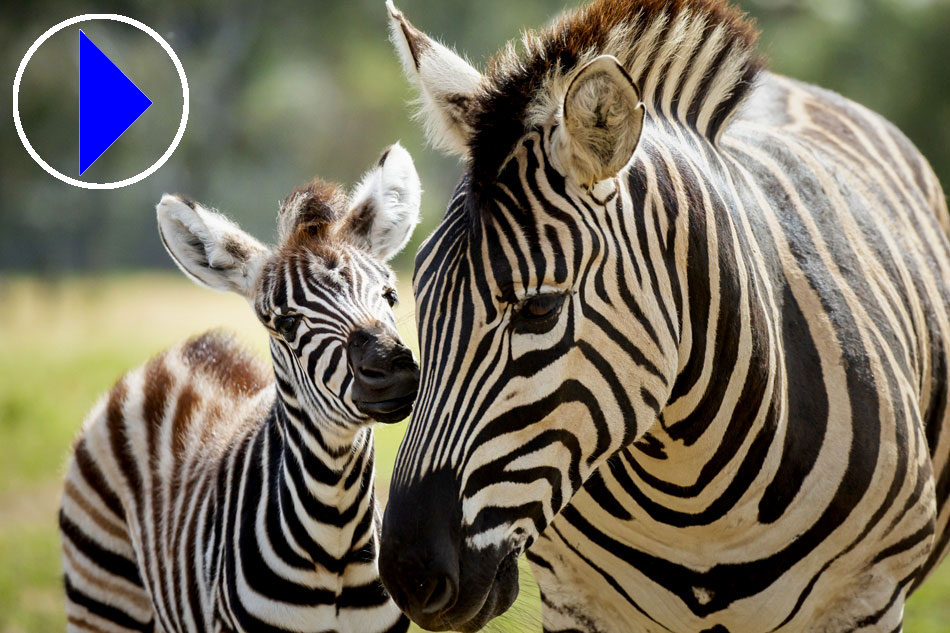Zebra rely on rainfall for food and water and therefore have to go on great migrations to follow the rains. Plains zebra cannot survive very long without water and must be no more than 25 – 30 kilometres from a water source.
Plains Zebra, like all zebra, are easily recognised by their bold black and white stripes. The stripes are vertical on the forepart of the body, travelling towards the horizontal stripes on their hindquarters. The northern species of Plains Zebra have narrower and more defined striping whereas southern populations have varied but lesser amounts of striping on the under parts, the legs and hindquarters.
Plains zebra stay in family groups of a stallion, or male and several mares, however, different families will come together to form huge herds – during the great migration in the Serengetti, herds of up to 10,000 zebras will form. Zebra herds will mingle with wildebeest, ostriches and antelope while they graze and even come to depend on them as additional protection against predators. The reason why zebra and wildebeest graze in harmony together is because they each eat different parts of the same type of grass.
The main predators of the plains zebra are lions and spotted hyenas. Nile crocodiles are also a big threat during river crossings. Wild dogs, cheetahs and leopards also prey on zebra, although to a lesser extent. At night time the plains zebras will retreat to open areas with good all round visibility in order to avoid predators whilst resting.
Additional Information:


